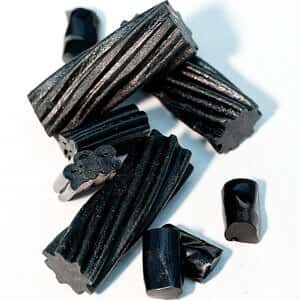
Your mother probably told you not to eat too much candy because it could ruin your teeth. Maybe your grandmother warned that gobbling candy would make you gain weight. But did anyone tell you to go easy on licorice as a way to prevent painful nighttime leg cramps? One reader discovered this connection independently.
Going Easy on Licorice:
Q. I have always enjoyed black licorice sticks as a special treat. It never bothered me until I started eating bagfuls of German salted licorice. Eventually my heart started racing because of a drop in potassium levels.
I haven’t had licorice for a few years now, but last week I bought a bag of licorice sticks on a whim. I cut them into 3-inch pieces and grabbed two large handfuls as an evening snack.
I was awake all night with the worst leg cramps I have ever had. I drank electrolyte water, ate a banana, took cramp pills, and the “fixes” worked temporarily. Then the cramps came back. The next day my legs were still extremely sore. I am now off licorice for good. Not worth the pain or the risk to my heart.
What Does Licorice Do in the Body?
A. Natural black licorice (Glycyrrhiza glabra) contains an ingredient called glycyrrhizin. It can deplete the body of potassium. Low potassium could potentially lead to edema, lethargy and high blood pressure as well as irregular heartbeats.
We suspect your leg cramps may indeed have resulted from an electrolyte imbalance. Your decision to take it easy on licorice makes sense since you appear to be especially vulnerable to the serious side effects of this sweet treat.
The FDA has warned that eating too much black licorice, about two ounces a day, can disrupt heart rhythms. The risk is especially high for people over 40, but even youngsters should not be allowed to binge on licorice.
Not all licorice candy contains actual plant extract; some is flavored with anise. However, it is hard for consumers to determine whether their candy has real licorice extract, so moderation is prudent.
Don’t Worry About Red Licorice:
Whenever we write about the dangers of too much black licorice, people want to know about red licorice. The red candy isn’t actually flavored with G. glabra, so the only hazards of consuming it are linked to its high sugar content.
Be Aware of Licorice in Tea:
Consumers of herbal tea should also exercise moderation. Some teas contain licorice extract either as a flavoring agent or as a botanical medicine. At the appropriate dose, this herb has benefits, but overdosing on it can be dangerous.


